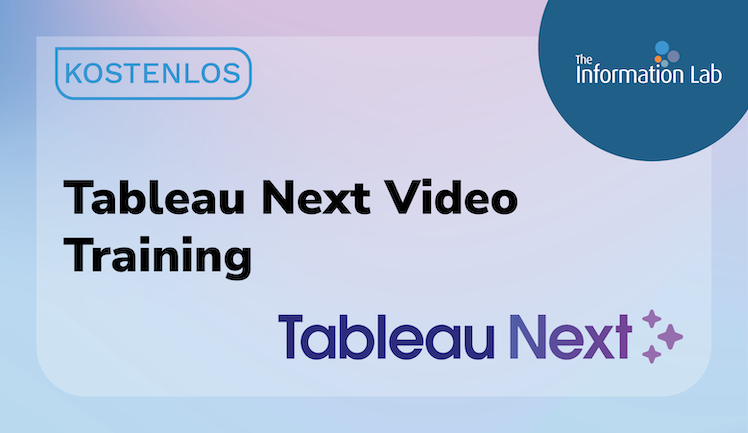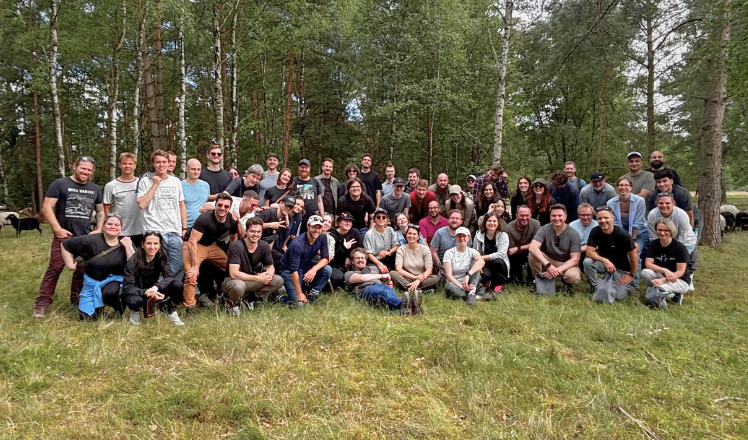Tableau Next:
Datenanalyse neu gedacht.
Bereit für die Zukunft der Datenanalyse? Mit Tableau Next revolutionieren Sie Ihren Umgang mit Daten – von der Integration bis zu KI-gestützten Insights. Dieses kostenlose Video-Training, entwickelt von unseren britischen Kollegen und komplett auf Englisch, bietet Ihnen in 6 kompakten Modulen und über 20 Videos einen strukturierten, praxisnahen Einstieg. Erfahren Sie, wie Sie sofort semantische Modelle erstellen, moderne Dashboards bauen und Tableau Next als führende Self-Service-Analyseplattform einsetzen.
-
6 Module |
-
24 Videos |
-
1 Std. 24 Min. |
🡪 Introduction to Tableau Next – 2:20
From your Salesforce organisation how do you go about finding Tableau Next and what exactly does the interface look like.
Collect all your Tableau Next components into one space centred around the topic or project you’re going to analyse.
You’re probably keen to get started analysing so let’s throw some data into Tableau Next to use for this training course.
🡪 Adding Data via Data Cloud – 5:04
If you are keen to pull in data from Salesforce, Snowflake or other third party data sources this video will give you a quick introduction to Data Cloud and take you through how your available data connections appear
🡪 Creating a Semantic Model – 3:47
A semantic model defines data and relationships that make up your dataset including column names and descriptions
Pull together multiple tables of data or data objects into your semantic model and define how they each relate to one another
🡪 Renaming and Removing Columns – 2:42
Keep your semantic model tidy and user friendly by renaming fields so they can be easily identified as well as removing unnecessary data
Your dataset won’t always have fields set out exactly as you need them. In Tableau Next we can use calculated fields to derive new information from our existing dataset
Bring the most important statistics about your business to the surface by creating a metric. See trends and get AI generated insight just like in Tableau Pulse
🡪 Adding a Logical View – 6:19
Logical views provide a separate area in which to create new combinations of data objects such as a union of two tables and bring them into the semantic model
Give the end user of your dashboard more control over what that can get out of the analysis for true self service analytics
🡪 Testing Your Semantic Model – 2:48
Don’t leave it to chance and have your end users tell you the data „just doesn’t look right.“ Test your semantic model as you build and check that the dataset returned is validated and there no unexpected duplicated records.
🡪 First Steps in Creating a Visualisation – 1:05
Let’s get started connecting our new semantic model to the drag and drop Tableau interface we all know and love
🡪 Creating Charts in Tableau Next – 7:52
Is the Tableau interface completely new to you? Let’s take a look at how we interact to have a chart appear and build with just a few clicks of the mouse
Sometimes you want your dashboard users to see the the numbers. A data table allows you to do just that without having to leave the dashboard
🡪 Creating a Dashboard and adding a Title – 2:39
Having built some metrics, visuals and data tables we’re now going to create a dashboard to put them all together
🡪 Adding a Couple of Visuals – 2:34
It’s time to start building up our dashboard by placing our charts and table created in previous steps
Metrics don’t just live in the semantic model, you can place them on the dashboard just like a Tableau Pulse metric complete with AI driven insights
🡪 Adding a Parameter to a Dashboard – 3:20
Enable more guided interaction with the dashboard and customisation by adding the parameters from the semantic model
Make one or more of your dimensions available for filtering via clear and interactive toggles
Collect together the various elements in your dashboard for easy placement and alignment
🡪 Navigating and Actions – 3:27
Taking action on your data is just as important as getting to make sense of it. Whether it’s opening a record in your Salesforce instance or your own internal portal adding an action is exactly what you need.
Providing guided analytics means using interactive filters in a clear and precise way, not just filtering every element on the dashboard
🡪 Asking Questions with Concierge – 4:02
Agentic analytics means having an AI agent at your fingertips when the analysis has sparked a question which just can’t be answered by the dashboard. With Concierge and AgentForce the dashboard isn’t the end of your analysis, it’s just the beginning!
Neugierig auf mehr?
Lesen Sie weiter in unserem Blogbeitrag zu Tableau Next
Melden Sie sich zu unserem Live-Webinar zu Tableau Next an
Oder nehmen Sie Kontakt auf, um mit unseren Expert:innen zu sprechen




